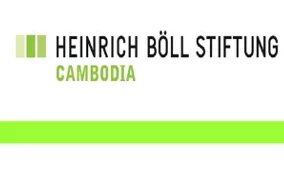
Women in Cambodia
Cambodia has had several outstanding women leaders throughout its history. QueenIndradevi for example, the wife of King Jayavarman VII, is famous for her promotion of women’s education in the 12th century. A famous scholar herself, she also acted as director of three universities thus supporting many female students (Inscription du Cambodge).
Despite of role models like her, the Cambodian society is a largely patriarchal and hierarchical system with strong traditional norms that assign higher status to men (USAID 2006). Traditional roles dictate that women are responsible for household management and family care, on top of the income work they are doing just like men. Although women widely manage the funds for household expenditures, men set priorities and decide when and how the money is allocated.
Female literacy rates have increased in the last years, but particularly rural girls and women over 15 years old still lag behind men (64% compared to 87%, NIS/MoP. 2004.) There is also a significant gender gap in terms of girls’ schooling, which is greater in rural than in urban areas. Recent reforms have resulted in equality in primary school enrolment, but rates for secondary education have dropped drastically over the last six years to 17% for boys and 8% for girls in upper secondary grades. This is the lowest in the Southeast Asian Region (ADB 2007).
Women compose the majority of the economically active population in Cambodia with 83% over 15 years old and 68% of girls in the age group 15-19 working. Female workers are often employed in unwaged or low skilled family employment. The number of rural women engaged in agriculture increased from 35.0% in 1998 to 52.5% in 2004. They face a continuing threat of economic dislocation due to weak or non-implementation of the land distribution policy under the land law (JICA 2007). About 17% of Cambodian women, particularly aged 20-24 are most likely to migrate to work in the garment industry, as domestic workers, in the sex industry or in the tourism industry (ibid).
Almost a quarter of married Cambodian women have experienced violence in their families (MoWA 2005). At the same time, increasing numbers of women have been victims of human trafficking since the early 1990s (Licadho 2006).
Cambodia has a reasonable framework of national legislation and international conventions upholding human rights and women’s rights, but implementation and enforcement are weak. Lack of awareness as well as women’s relative lack of power increase their vulnerability to exploitation and abuse. Further, a culture of impunity tends to protect perpetrators rather than victims of violence and abuse (USAID 2006).
Women still remain largely marginalised in the political sphere in terms of influencing and implementing state policies. 19% of the representatives in the national assembly and 15% in the senate are women (MOWA). Female representation on the local level has been successfully increased: 15% of the commune councillors elected in 2007 are women. Compared to the last elections in 2002, the number of female local representatives has nearly doubled (World Bank 2007).
Objective:
The survey has been conducted as a first scoping study for future decisions on HBF’s activities in the field of gender issues and women’s politics. The study describes different approaches and strategies employed by organisations working in the field of gender and women politics. It lists the major challenges the organizations face in their every day work and provides best practice examples in the field of women’s empowerment, gender justice and change of gender perception. The survey also identifies potential cooperation partners and allies as well as needs and gaps that could potentially be addressed by the HBF Cambodia Programme.
Full study (English, PDF, 33 pages, 595 KB) by Kim Baureaksmey and Susanne Schütte